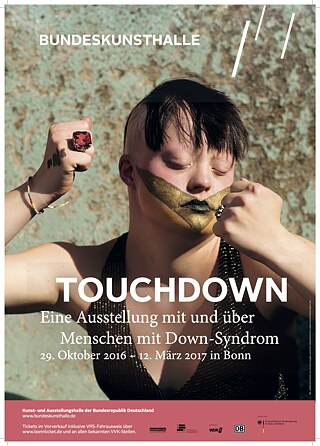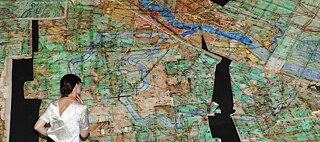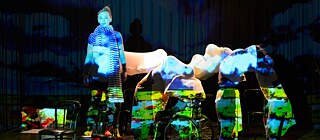Inclusion
“It’s always first and foremost about art”

Artists with intellectual impairments should have the same opportunities as others – but that isn’t always the case. Katja de Bragança from the participative research institute TOUCHDOWN 21 talks about the options available to artists with a disability in Germany.
By Eleonore von Bothmer
Ms de Bragança, with your institute TOUCHDOWN 21 you’re campaigning to facilitate cultural involvement for artists with Down syndrome. In your estimation, how are artists with a disability faring in Germany?
Things aren’t that easy for artists in general – for artists with a disability of course it’s even more difficult. They don’t have access to art universities because the university entrance qualification is a requirement for studying art – but artists with intellectual impairments are frequently unable to achieve this. Surviving as an artist in financial terms is not easy either. That makes it harder for artists with a disability to work in creative professions. But there are also some amazing projects in Germany that support and enable their work. Unfortunately – as yet – too few. And as ever their personal circumstances play a role here as well: not all parents are thrilled if their child wants to become an artist – regardless of whether they have a disability or not.

At any rate they are far more dependent than others – including on their families. People with a disability often don’t make key decisions themselves, that’s still the case even in 2021.
What is the difference between art by artists with a disability and art by people without a disability?
Nothing at all! A work of art must be able to stand on its own. The fact that artists with a disability might have created it under different conditions than other artists should not matter. First and foremost it’s about art. These artists should and want to be measured as just as stringently against this benchmark as other artists do.
What opportunities do they have to exhibit their works?
For a long time, art by artists with a disability was labelled as “Outsider Art” or “Art brut”. As such it gained limited access to museums. Fortunately things have been different for some years. Even larger galleries are exhibiting collections that include art by artists with a disability without this being explicitly stated. So far that has tended to be on a one-off basis, but it is pointing the way. It’s a matter of access in this context too, for example: Is the person lucky enough to work in a studio that endeavours to cooperate with galleries?
How could more inclusion be achieved in art?
For artists with a disability there are structural obstacles that others don’t have. I’ve already mentioned the acceptance requirements for art universities. Money plays a role too. Artists with a disability not only need material and a place to work just like others, but they might also need someone to accompany them and if necessary assist them with everyday needs as well as their artistic work. It would also be helpful if fees for entering competitions could be paid for. Most people with a disability receive a workshop salary of around 200 euros a month. It doesn’t matter whether the person is an artist or sorts screws.
What other options would there be?
In my experience, inclusion works best if people are working together with the same focus, for example through an artists’ residency. But someone who might never have left their parents’ home in their lifetime because of their disability – and that’s the case for many – frequently cannot participate just like that. Action should be taken here so that everyone has equal opportunities.
And at a personal level?
As well as support in terms of logistics, there is a need for personal support, encouragement, empowerment. I would say: 80 per cent logistic support, 20 per cent encouragement. Of course that’s a matter of luck as well: you do have to encounter the right people. It does everyone good to be reinforced in their visions.

The artists from our group of people with Down syndrome benefit for instance from writing workshops, through which they can describe their creative processes and explain their art. But we also network, create contacts with other creative people, including in other countries. Art is highly suitable for establishing a dialogue. But all this requires lots of networking, organisation, logistics – and money.
Is it easier in Germany than in other countries?
Germany is a very well-to-do country. There are rules and regulations for everything. In other countries there is often more freedom. The people – not just the artists – take what they have, and it’s easy to do so. I find this very inspiring! In Ukraine for example the artists were using discarded carpets because they couldn’t afford canvas. Scarcity can make people creative. That is an important message: Nothing is impossible! You can do almost anything if you really want to – as long as you have a vision.
What do you like about your work?
I see it as an enrichment for the world if there is space for diversity. I’m very glad to be a part of it. The world is like a garden: beauty emerges as a consequence of variety. I also see again and again in my work that things need time – everything takes its time – and that’s how it should be. Every little step, every movement counts. It doesn’t necessarily always have to be big advances.
